► český překlad textu najdete zde
When I was in Puriscal, the nearest town, searching for the bus to come here, few people knew just by looking at me that I am headed here. Ten years ago, it was difficult for volunteers to find their way here. How did the small village of Mastatal become such an attractive location for tourists?
It all started in 1987 when the national park La Cangreja was founded and tourists started to come here. In 1991, the location which is now called Rancho Mastatal was bought by an American couple and turned into a model farm for education – the first project in this community to welcome volunteers and teach them about sustainable living and building. We have four projects here now, Finca Siempre Verde was the second one in the line.
Did you see the tourist destination potential here? All the things you offer to your guests at the farm seem to fit together. Did it happen by chance?
First of all, the property is not mine, it belongs to my family. All I own is the dirt under my fingernails. I have grown up with animals – pigs, chickens, cows, horses. I always felt close to my homeland and, although I took a course of permaculture at secondary school, the best lessons I ever learned were from my dad.

Marcos Garcia at family farm
What came next?
After finishing secondary school in 2001, the local government offered subsidised courses – to become a chef, dressmaker, carpenter and so on. I took a one-year course of carpentry, knowing I had no money to go to the university. I was working at a project here in Mastatal, at the community centre in 2003.
Later I took English classes and got an eco-tourism certificate. I was teaching Spanish at Rancho Mastatal for a while but that was very informal. I was looking for a place of my own where I could put to use what I have learned.
Ecotourism. Could you explain me more this concept?
Let’s say you come to Costa Rica as a tourist. You can either stay in expensive hotels and spend money and see just one side of the country. Or you can come here, stay with the locals and get to know more about the natural habitat and the real life. That is what I try to promote.

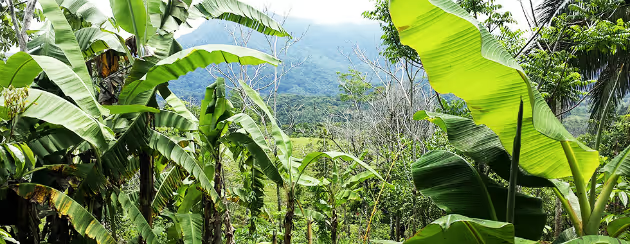
Did you take any more courses?
I try to seize any opportunity. There was a course on building from bamboo, so I took that one. Recently I went for a short trip around Costa Rica, learning more about my own country. It never stops.
You built the lodge with the help of a university group, I came here as a volunteer, you have also interns that come and stay here for a couple of months; people can stay with your family as part of an immersion program, you teach them Spanish… How does that all work out together?
Finca Siempre Verde is open to everyone. Rancho Mastatal no longer hosts short time volunteers. I do, but my plan is to stop doing that in the future. I built the lodge to be able to host big groups and organize retreats here. This February we have two groups coming - they will have tours with me and courses of massage with Ruth, my new intern.
So in the future you plan to host groups instead of volunteers?
Not entirely. Groups are important for me and the project’s survival; having short-term volunteers is unfortunately not financially viable. I would however like to be able to host long-term volunteers, interns, with whom I can build up a closer relationship and teach them more.
.avif)
Groups pay to come and stay with you - what program do you offer them?
When a group from university comes, they usually want to do community work like painting the church or cleaning in the village. I give them tours and teach them about building and sustainability.
When you were giving me the tour around finca, you said: Everything you see, me and volunteers built together with our hands. Except for those two rocking chairs. So could you tell me when did it all start, what was the first building?
It all started in 2005; the project was called Cabanas Siempre Verde. I could only host one or two volunteers at a time back then as I was still living in the house of my parents, and the first goal was to build a place where the volunteers could stay: the cabanas down the road.
What are they built from?
Mainly wood, metal for the roof and nails and screws.
Was it a good project, would you build it again or would you change something?
It is well built but the surroundings aren’t perfect. It is in the middle of the forest, there is little light there and it is very humid. You would have to treat the wood constantly and it was difficult for the volunteers who were staying there as well - their stuff caught mould very easily, too. One of the buildings is still partly there, and I used the material from the other one for the other projects.
You said you only had 1 to 2 volunteers per month at that time and now you have capacity for 20 people. That was 10 years ago, so how did the project get so far?
The beginning was slow. When I started, I put the project on the WWOOF page and a year ago a volunteer made the webpages and a mailbox for me. I learnt how to use the computer only she was supposed to call me whenever someone sent her an email about coming here. I haven’t heard from anyone in 6 months and it was only then that I finally opened the mailbox myself and found out I had hundreds of unread messages.
What happened next?
In 2009 I got married and with the help of volunteers we started to build the main building (the main building contains Marcos’ room, which is a closed room, and a spacious kitchen where his sister Carol cook three meals a day for the volunteers; this open space opens up into an area where volunteers eat and rest in rocking chairs or in a hammock).
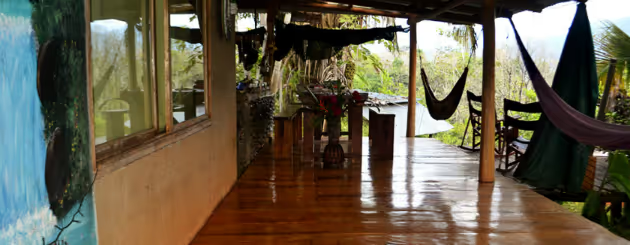
The Lodge is a three storey building built in the years 2012 and 2013.
How long did it take to build it and what material did you use?
The building went on from January until September and the structure is built from teak wood, cedar wood, concrete, stones from the river and metal for the roof.
How do you choose the material? Do you have any preferences?
I try to pick material which is easy to get in this area, is sustainable and cheap. Teak wood, for example, is beautiful solid wood – but it is not a good material; it is expensive and it takes very long for the wood to grow. Once you fell, the land turns into a desert as the leaves sterilize the soil. I use teak which leftover wood I get for free from companies around here. The wood doesn’t have the perfect straightness and the building companies will not to use it. I don’t mind. I get beautiful natural material and I don’t have to fell the tree to get it.
How about cedar wood?
Cedar wood, on the other hand, grows here very easily. The floor boards in the house are made from this wood. Again, the one that I used is leftover wood I got for free.
A similar thing happens with the tiles that I use as binding material: they are broken or somehow imperfect and companies throw them away.
Well, this is a very economic way of building, isn’t it?
The most expensive material turned out to be stones from the river. I picked them up with the help of volunteers but I had to hire a truck to bring them up here and that was quite expensive. However, at that time I really wanted to make the kitchen wall out of them as I think they are beautiful.
Who designed the building?
Marcos smiles and points at himself. Have you noticed the animals up in the lodge?.
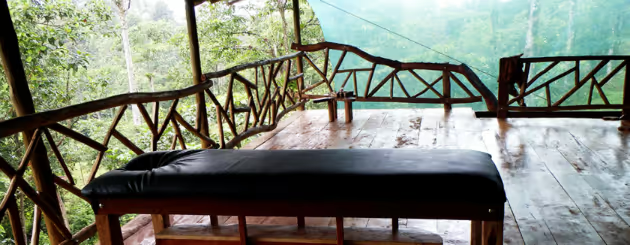
Marcos Garcia is a man of many skills and professions. An eco tour guide, Spanish and English teacher, salsa dancer, expert on Costa Rica’s birds and animals, builder and a farmer. He finds use for all these activities at a small farm called Finca Siempre Verde (Always Green Farm) located in a small village called Mastatal in Costa Rica.
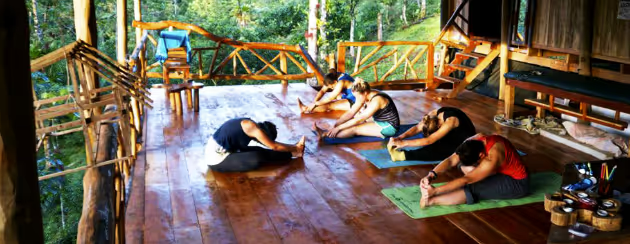
A growing library and a space for volunteers to exercice, play music or meditate.
I only saw a toucan.
Look for a crocodile and an owl. (Marcos is referring to pieces of wood that are naturally shaped as the animals. You have to really open your eyes to see the simple and elegant decoration.)
You choose your material for practical reasons and you search for simple solutions. What about bamboo?
Bamboo is an invasive plant that has been imported here from Asia. It grows very easily and very fast once you cut it, as it has long roots. I don’t feel bad by cutting it, plus a friend of mine owns a bamboo plantation so I get it easily and for a fair price. Besides it is a beautiful material.
I saw piles of bamboo in front of the lodge, could you explain how you treat the wood before it can be used.
First you have to make the wood hollow, so you dig a hole through it. When that part is done you inject the wood with some chemicals: diesel fuel and chromium to protect it from termites and mould. Especially the mould, as the rainy season lasts 9 months here.
What purposes do you use the bamboo for?
As pylons, to support the roof, to make a chair, table, bed.
So it is a strong material?
Yes, it is. There are two types of bamboo; the one I am using is strong and ideal for construction. There is another one, which is thin, and I use it very rarely, mainly for decoration.

The building of the new compost toilets (Photo by Hana Stejskalová)
Could you tell me more about the building of the new compost toilets? I saw people mix some material and later perform exotic dancing on them.
Oh, the dancing is very important! (smile) The walls of the toilet are made out of cob, a mixture of clay, sand, water and straw. In order to mix all those ingredients well and make a good material, you have to beat them together, ideally by your feet, by jumping or dancing on them. We always put down a layer, leave it dry and bond. The next day or any other day we water the wall a little so that the new layer glues well to it well. And so on.
Why is the base made out of concrete blocks?
That part will get very humid. It is the same case as with the shower; I had to use concrete to make the base as cob does not do well in constant humiditycannot.
Why did you decide to make a new toilet and right here, in the lodge itself, on ground level? I know the one up the hill is a bit far but aren’t you afraid of the smell?
The original compost toilet is made out of wood. Wood cannot stand the humidity and the heat that rises from the excrements for too long, so I would have to make a new one at some point anyway. I plan to put a metal chimney to it so that the smells are ventilated away.
You said you were planning to use wine bottles as you did for the showers. Is there any other reason to use them besides decoration?
Yes, there are quite a few. I like the design, but wine bottles can also bring light to the space and with light and can serve partly for ventilation. But most of all, by recycled material, I never have to use new one. By not making the showers only out of concrete, by putting bottles in between, I saved a lot of concrete.

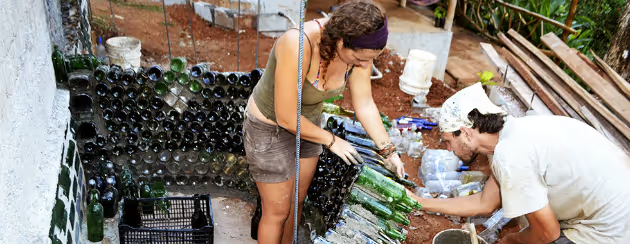
What other plans for the future do you have?
There are too many. I would like to continue being as sustainable as I can, grow vegetables in the greenhouse; I recently started growing coffee. My big goal is to one day move the pigs somewhere else, this way it doesn’t look very good when visitors come and one of the first things they see are two small pigpens. My dad complains that he has to have them close in order to be able to visit them and feed them, however I would like to move them one day and maybe, that is a big dream, build a cooker one day that will be fuelled by pig excrements. But that is still very far in the future.


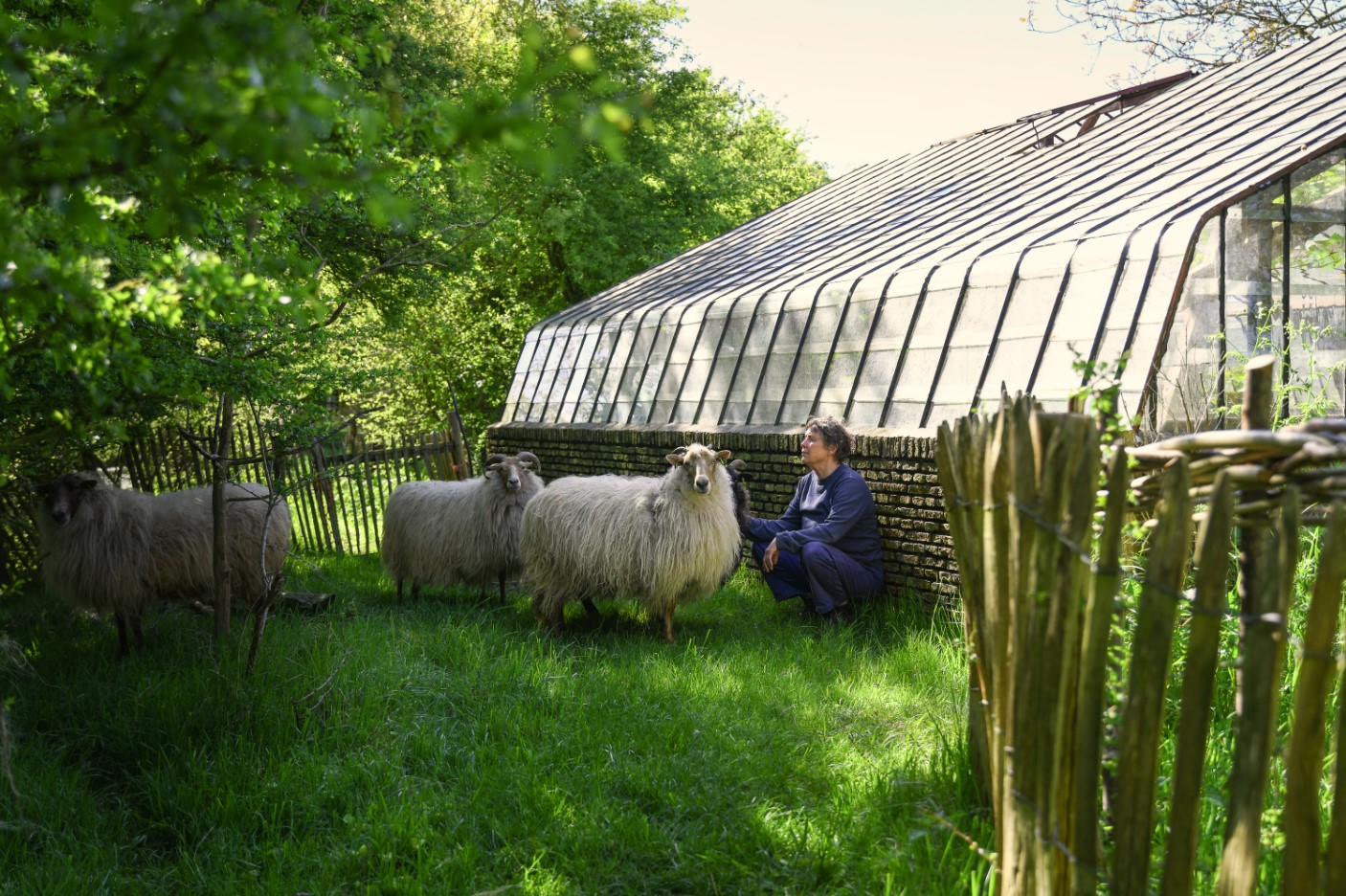

%20(2)%20kopie.jpg)